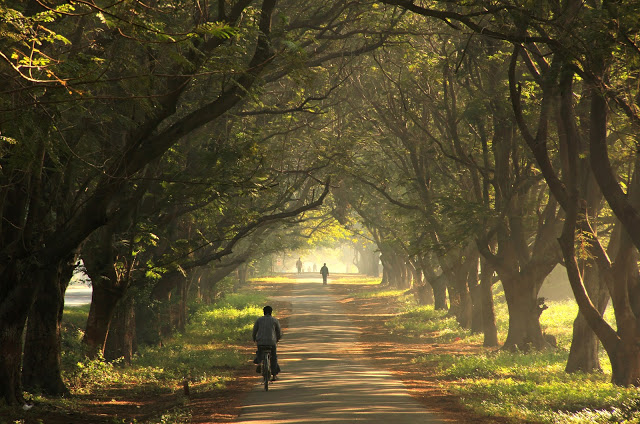A Modest, Do-able, Green Proposal for the Year of the Wood Horse.
It is a little appreciated fact that city trees save millions of dollars, reducing storm water run-off, mitigating air pollution and reducing energy costs every summer by shading buildings.
Bonus: Seattle is planning to build a new city park filled with hundreds of edible plants- such as fruit trees, vegetable plants, herbs, etc- which will be free to everyone. If successful, it will be the first “Urban Food Forest” of the nation. (npr.org)
And: Trees can capture over 50% of the particulate matter in polluted urban air.
Urban trees are much more than a perch and nest for songbirds and squirrels. But since the dollar is the only way to penetrate most politicians’ minds, our politicians should be informed that trees are the only form of city infrastructure that actually increase in value over time! But their beauty is enough to convince me of their intrinsic value.
Halifax, Nova Scotia only got around to urban forest planning in 2001. When Hurricane Juan hit Point Pleasant Park and leveled the white pine forest there, Haligonians began to realize that we had been taking our urban forests for granted. And like Joni Mitchell’s song instructs, we didn’t know what we’d had until it was gone.
Even after the devastating loss throughout the city, it took a while for the city to come up with a creative response.
Realizing that in the concrete of any city, healthy trees simply don’t grow themselves, in 2006 the Urban Forest Master Plan was developed, yet still was not adopted by council until 2012. Nevertheless, this plan is the most comprehensive urban forest plan in Canada, identifying 110 unique neighborhoods, including their historical contexts and ecological needs. And it is the only plan to be adopted by the Canadian Standards Association’s national standards for sustainability.
 The plan was launched in the spring of 2013 with plantings in five neighborhoods.
The plan was launched in the spring of 2013 with plantings in five neighborhoods.
Along with the planting, since mid-January, streets have been briefly closed by pruning trucks, not as a reaction to storms, but as the start of the first ever program to keep mature trees healthy in Halifax.
This could be a model for all North American cities to follow. Yet initiatives like this, with value expressed in long-term savings, are often first on the chopping block. But no city can really afford to react tree-by-tree to the latest storm or disease outbreak, and with climate change we have been seeing more storms and the spread of more diseases making old trees vulnerable.
Individual citizens can do a great deal. I have a policy that every time I take an airplane I plant a tree. This may be tokenism, but it’s doing something.
Making a point to plant native trees is the most sustainable plan.
In Nova Scotia there are 30 different kinds of native trees, with softwoods like pine, spruce, hemlock, balsam fir, cedar, and tamarack making up 60 percent of the total volume. So one is not limited in what one can plant! Native hardwoods like birch, maple, aspen, and oak mix in beautifully with the evergreens, giving spectacular color every fall.
Elms, linden, poplars, French willow, horse chestnuts, and black locust may be attractive but are actually “exotic” and are not the most hardy for surviving Nova Scotia’s prolonged winters, where we tend to call spring “sprinter”!
The point is that trees are our allies.
Urban trees deserve our attention, planning, and care. It is my hope that cities and individual citizens throughout North America will realize that, with a little research and planning, this is a do-able benefit for this year of the Wood Horse.
Love elephant and want to go steady?
Sign up for our (curated) daily and weekly newsletters!
Editor: Catherine Monkman
Photo: Sai Kiran/Pixoto
Bonus:
 Share on bsky
Share on bsky







Read 1 comment and reply